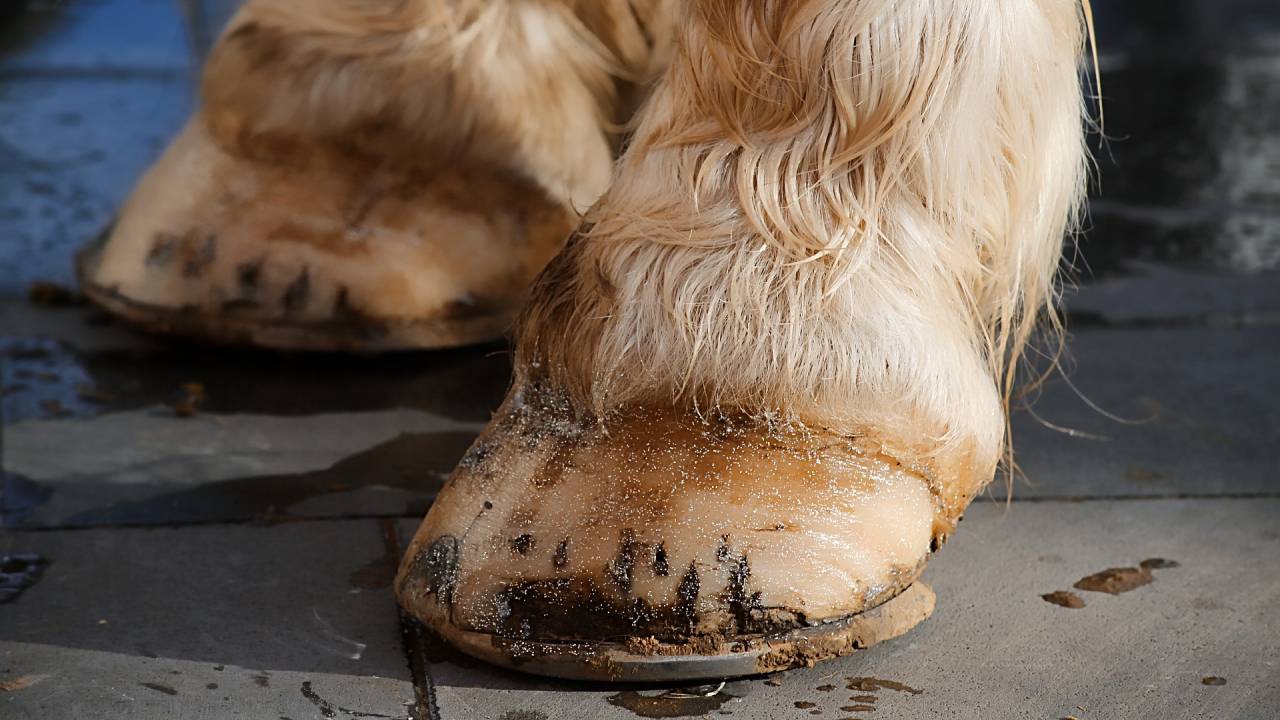The horse’s hooves are a very unique part of the horse’s body that serve several different purposes to the horse. Without healthy hooves, the horse is basically unable to do anything or serve any purpose. There are so many different interesting facts on the horse’s hooves that I thought writing about it could produce an interesting and fun article.
1. Horses Are Born With Soft, Squishy Hooves
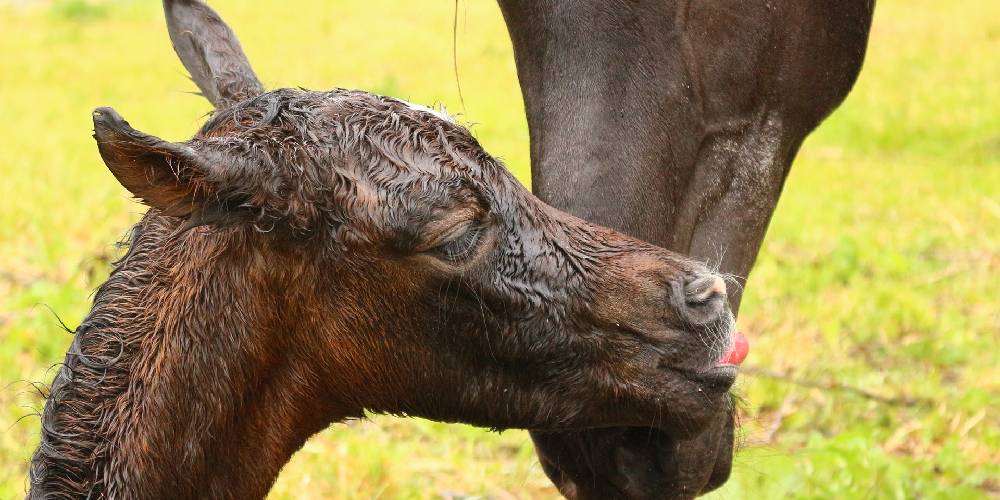
You might think of horse hooves as being hard and solid things, but your horse’s hooves weren’t always this way.
When inside their mothers, the baby horse will kick just like a human baby might kick. The only problem is that if a baby horse had hard hooves when inside its mother, then kicking could cause a great deal of harm both while inside the womb and in the event of birth. Because of this, baby horses are born with soft squishy hooves!
As to not injure their mother from the inside, foals have soft hooves during the time in the womb up until the time they are born. Once they are born, their hooves react to the air and they begin to dry out or harden. After just being a few hours old, their hooves are pretty much hardened to the point where they feel hard like normal hooves.
2. Black Hooves Are Better To Have Than White Hooves
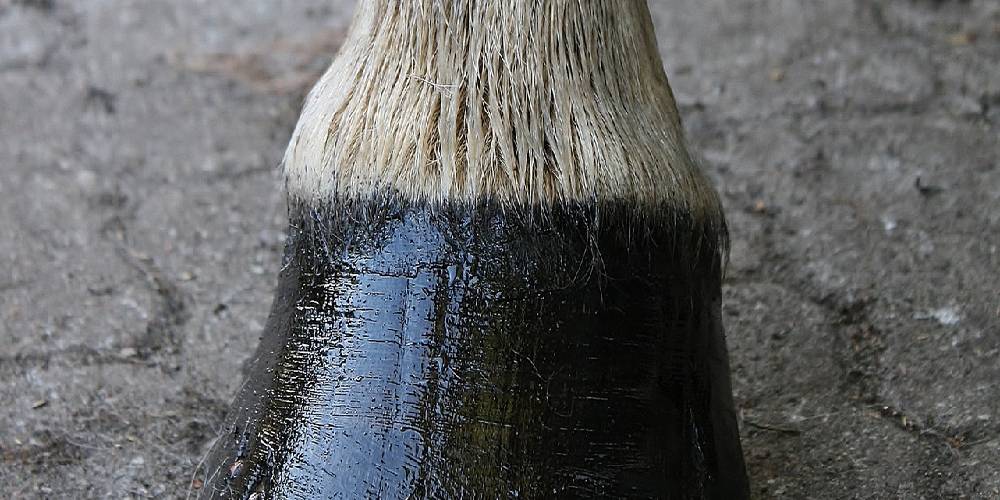
If you look at a horse that has white markings on their legs, you might notice that their hooves have white on them if they aren’t completely white all over. This is because the hooves reflect the pigmentation of the lower leg. If the lower leg is dark then the hoof is dark and if the lower leg has white then the hoof will be white or contain white.
If a horse has white hooves, these hooves are thought to be weaker, more prone to lameness, and more likely to have issues in general. Black hooves or darker hooves are stronger and are less likely to break, crack, or suffer problems than white hooves do. When looking at buying a horse, look for this trait and if possible, aim to get a horse with darker hooves.
3. The Hooves Contain Three Bones
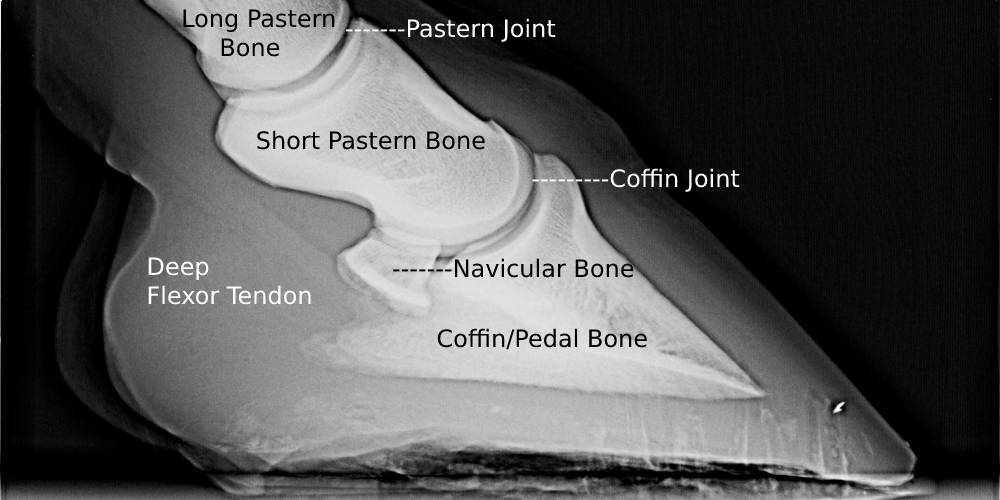
Believe it or not, there are actually three different bones found in the hoof. These bones are the coffin bone (also known as the pedal bone), the navicular bone, and the short pastern bone.
The coffin bone is considered to be the main bone of the hoof. This bone takes on most of the hoof’s pressure as the horse moves and it is also one of the most dangerous bones in the case of laminitis.
The navicular bone is a tiny bone just behind the coffin joint. This bone is responsible for supporting the Deep Digital Flexor Tendon that runs down the back of the horse’s leg and into the hoof.
The short pastern bone is only partially in the horse’s hoof. The other part of the short pastern bone meets with the long pastern bone at the pastern joint. This bone is kind of like a bridge between the horse’s hoof and their leg.
4. The Frog Of The Horse’s Hoof Is A Sort Of Shock Absorber
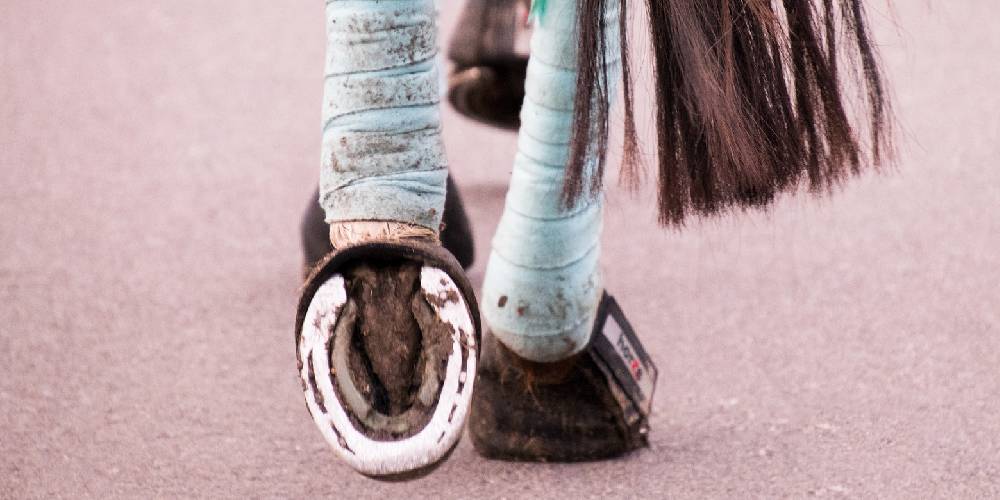
The frog of the horse’s hoof is a softer part of the hoof located in the center of the bottom of the hoof. This part of the hoof kind of acts as a shock absorber, like your shoes help to absorb the shock running might have on your feet.
Not only does the frog absorb shock, but it also acts as a sort of pump. The lower legs of the horse don’t receive much blood flow because there isn’t any muscle on this part of the horse’s leg so the use of the legs pushes on the frog which helps to push blood up through the legs.
5. The Hoof Is Flexible
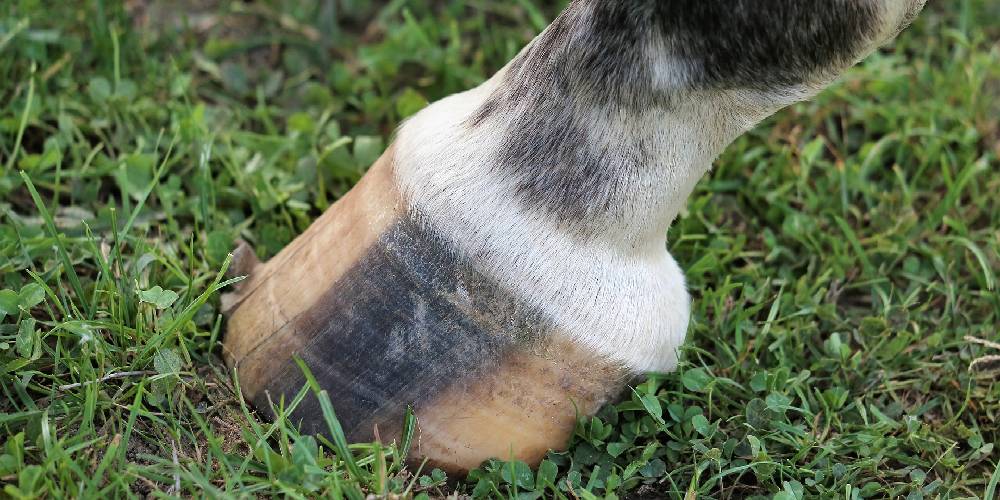
The hoof though it might seem rock solid, is actually quite flexible. As the horse moves, they step on their hooves which expand when the horse’s full weight is on them. The hooves are kind of like the horse’s shocks as they absorb all the concussion that otherwise the horse’s bones would absorb.
6. Horse Hooves Grow Fast In Spring & Fall, But Slow Down In Summer & Winter
During the summer and winter months, horses have slow growing hooves. This means that when the farrier comes to trim and file the horse’ hooves, they take off less during these seasons. Why do the horse’s hooves grow slowly during these seasons though?
A few of the reasons why your horse’s hooves grow slowly in the winter months could include:
- Slowed circulation due to the cold
- Reduced exercise because of the weather
- More energy is used to keep the horse warm than other things
A few of the reasons why your horse’s hooves grow slowly in the summer months could include:
- The hooves dry out
- The winter coat is shed out so increased growth during shedding is reduced
In the spring and fall months, horses have greatly increased hoof growth. There are a few reasons why this might be:
A few reasons why horses grow more hoof in spring include:
- Shedding of the winter coat could cause the hooves to ‘shed’ too which causes more growth
- Warming conditions improves blood circulation
- Frequent exercise
A fer reasons why horses grow more hoof in fall include:
- Good weather improves blood circulation
- Frequent exercise
- Growing of the winter coat could cause the growth of the hoof
7. Wild Horses Have Really Hard Hooves That Pretty Much Trim Themselves

Some might wonder, how do wild horses keep their feet so neat and nice if there is no farrier trimming them? The explanation is simple, the hooves trim themselves!
A the horse’s hoof grows, the longer bits of the hoof tend to break off or chip away. Because of this, once the extra hoof breaks off, the hoof is well shaped and good to go.
The rocky terrain that many of these horses live on helps to break off and wear down the extra hoof and make it return to more normal size.
8. Horse Hooves Are Made From Keratin
Did you know that horse hooves are made of keratin? For those of you that don’t know what keratin is, it is basically the ‘material’ that makes up:
- Human hair
- Human finger and toe nails
- Rhino horns
- Elephant tusks
9. Extreme Dryness & Extreme Moisture Are Both Really Bad For Your Horse’s Hooves

There are really negative things that can come from extreme dryness and extreme moisture when it comes to the horse’s hooves.
When a horse’s hoof is too dry, it can be prone to:
- Cracking
- Chipping
- Breaking
- Brittleness
- Crumble
When a horse’s hoof is too wet, it can be prone to:
- Thrush
- Bacterial infections
- Deformations due to softer feet
- Soft soles
- Sloughing off of the frog
10. Horses Grow A New Hoof Each Year
Did you know that in the span of a year, a horse grows an entirely new hoof? Horses grow anywhere from 1/4 inches to 1/2 inches (6 to 9 millimeters) of hoof in just one month!
Because of this, by the time that a year goes by, the hoof is completely grown out and a new hoof is in place.

